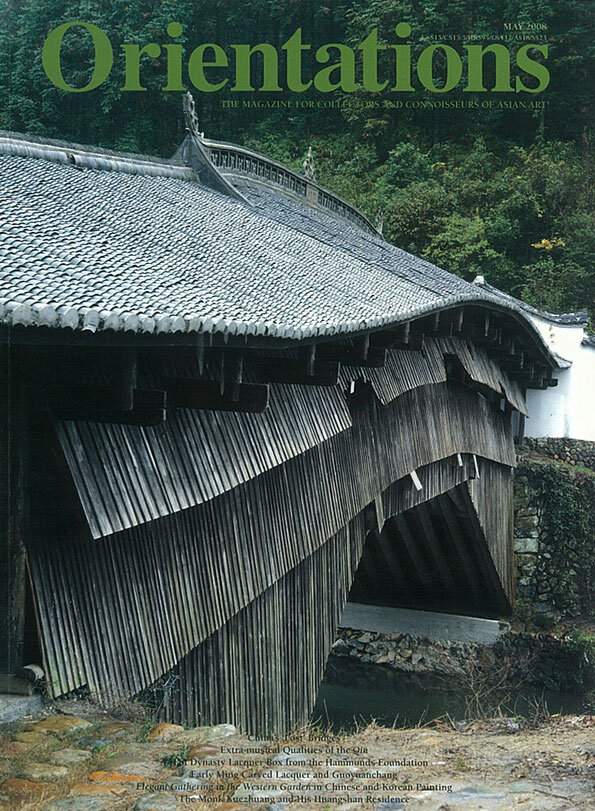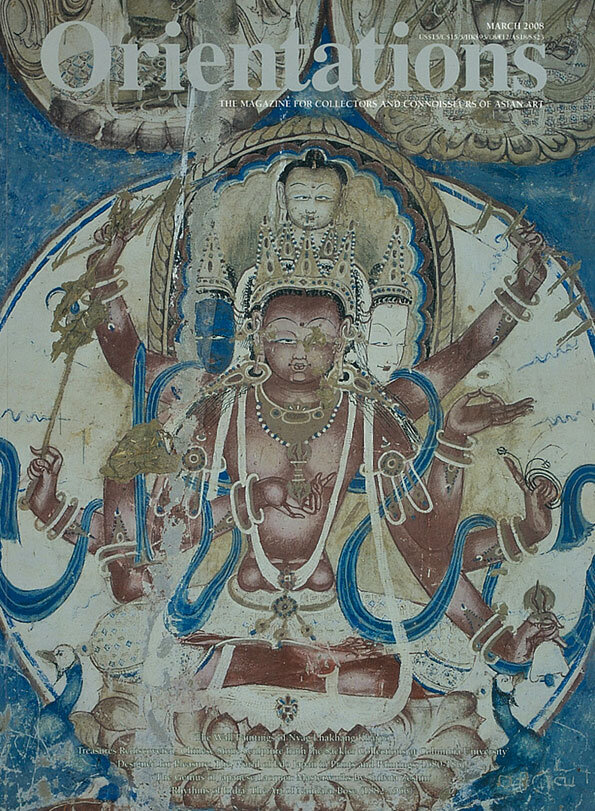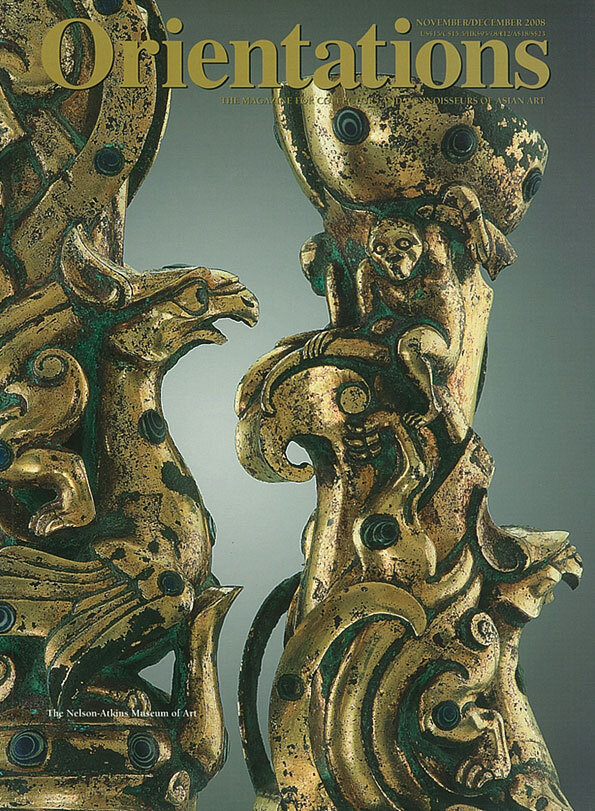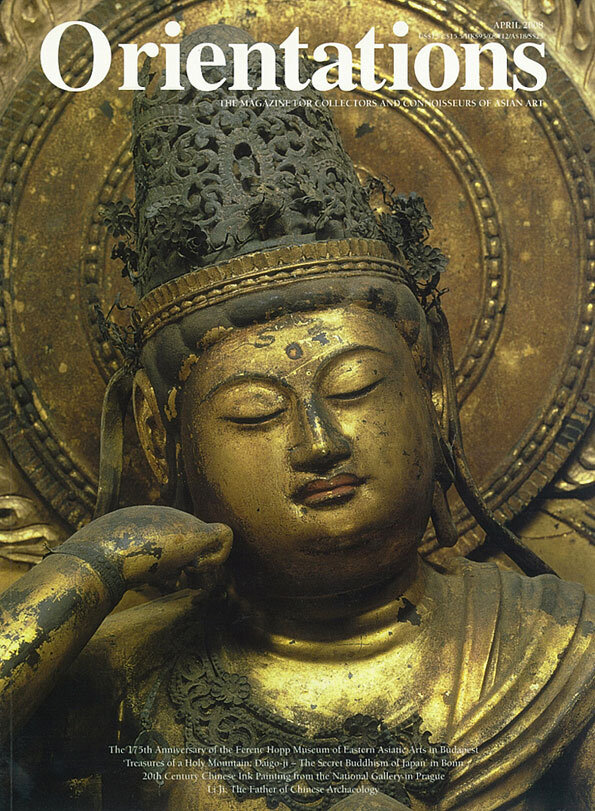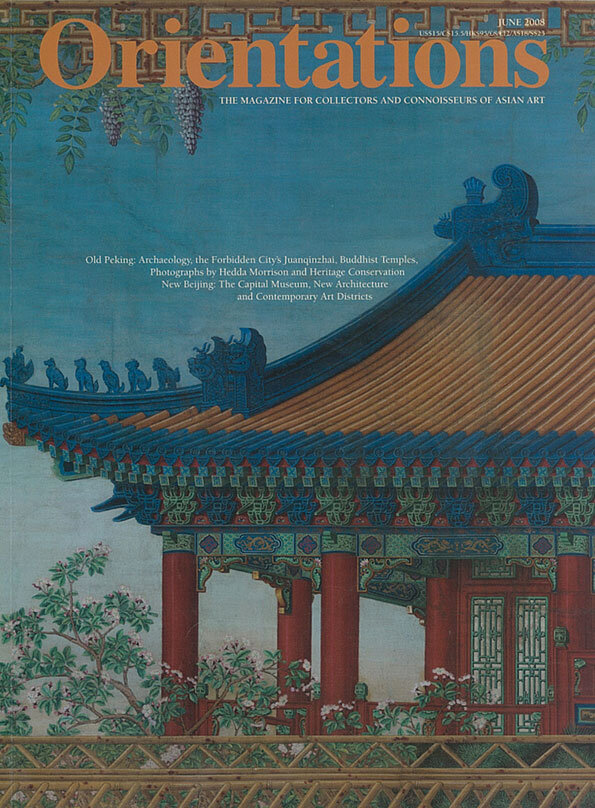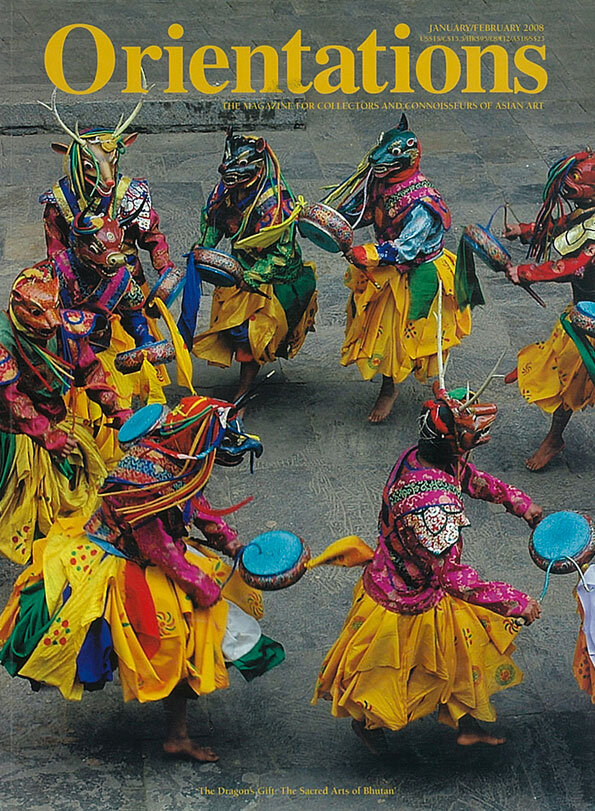MAY 2008
VOLUME 39 - NUMBER 4
In our May issue, we focus mainly on aspects of China's art and architecture. Ronald Knapp's article centres on the mysterious architecture of the wooden `rainbow bridge' in the famous Song dynasty painting Qingming shanghe tu, and presents examples of recently discovered bridges in southeast China that reveal a similar structure. Nick Pearce discusses the qin's relationship to painting and ideas stemming from Chinese visual culture, and its intimate association with the literati. Margaret Prüch introduces a rare example of a gilded and silvered lacquer lian from the Western Han period; the box, which is published here for the first time, has an inscription listing the craftsmen involved in its production. Lee King-tsi's study of Ming and Qing texts, maps and extant pieces challenges the common assumption that Guoyuanchang was a lacquer workshop in Beijing. Burglind Jungmann examines two Korean screens depicting Chinese scholars in a scene known as the Elegant Gathering in the Western Garden - a popular status symbol in the Choson period - and compares them to Chinese hanging scrolls. Joseph Chang discusses the little-known Buddhist monk-painter Xuezhuang, who lived as a recluse on Huangshan in the early Qing dynasty; aspects of Xuezhuang's identity are revealed in the show `Yellow Mountain: China's Ever-Changing Landscape' at the Arthur M. Sackler Gallery of Art in Washington, DC (31 May-24 August).
Included also are a review by Amy Heller of the book accompanying the recent pioneering exhibition of Bon art at the Rubin Museum of Art, and previews of Asian art fairs in Brussels and London.
FEATURES
Joseph Chang. A Wild Man and His Cloud Boat on the Yellow Sea: The Monk Xuezhuang and His Huangshan Residence
Burglind Jungmann. Two Screens of the Elegant Gathering in the Western Garden in Western Collections
Lee King-tsi. Was Carved Lacquer Ever Manufactured at Guoyuanchang? An Examination of Textual and Material Sources
Margarete Pruch. A Han Dynasty Lacquer Box from the Hammonds Foundation
Nick Pearce. More Sight than Sound: Extra-musical Qualities of the Qin
Ronald G. Knapp. Rainbows and Centipedes: 20th Century Discoveries of China's 'Lost' Bridges
PREVIEWS & REVIEWS
Amy Heller. Book Review: Bon - The Magic Word: The Indigenous Religion of Tibet, Edited by Samten G. Karmay and Jeff Watt, Rubin Museum of Art, New York and Philip Wilson Publishers, London, 2007
INTERVIEWS
An Interview with Aziz Bassoul
COMMENTARY
David Llewelyn. Commentary: Copyright and 'Copywrong' for Artists
VOLUME 39 - NUMBER 4
In our May issue, we focus mainly on aspects of China's art and architecture. Ronald Knapp's article centres on the mysterious architecture of the wooden `rainbow bridge' in the famous Song dynasty painting Qingming shanghe tu, and presents examples of recently discovered bridges in southeast China that reveal a similar structure. Nick Pearce discusses the qin's relationship to painting and ideas stemming from Chinese visual culture, and its intimate association with the literati. Margaret Prüch introduces a rare example of a gilded and silvered lacquer lian from the Western Han period; the box, which is published here for the first time, has an inscription listing the craftsmen involved in its production. Lee King-tsi's study of Ming and Qing texts, maps and extant pieces challenges the common assumption that Guoyuanchang was a lacquer workshop in Beijing. Burglind Jungmann examines two Korean screens depicting Chinese scholars in a scene known as the Elegant Gathering in the Western Garden - a popular status symbol in the Choson period - and compares them to Chinese hanging scrolls. Joseph Chang discusses the little-known Buddhist monk-painter Xuezhuang, who lived as a recluse on Huangshan in the early Qing dynasty; aspects of Xuezhuang's identity are revealed in the show `Yellow Mountain: China's Ever-Changing Landscape' at the Arthur M. Sackler Gallery of Art in Washington, DC (31 May-24 August).
Included also are a review by Amy Heller of the book accompanying the recent pioneering exhibition of Bon art at the Rubin Museum of Art, and previews of Asian art fairs in Brussels and London.
FEATURES
Joseph Chang. A Wild Man and His Cloud Boat on the Yellow Sea: The Monk Xuezhuang and His Huangshan Residence
Burglind Jungmann. Two Screens of the Elegant Gathering in the Western Garden in Western Collections
Lee King-tsi. Was Carved Lacquer Ever Manufactured at Guoyuanchang? An Examination of Textual and Material Sources
Margarete Pruch. A Han Dynasty Lacquer Box from the Hammonds Foundation
Nick Pearce. More Sight than Sound: Extra-musical Qualities of the Qin
Ronald G. Knapp. Rainbows and Centipedes: 20th Century Discoveries of China's 'Lost' Bridges
PREVIEWS & REVIEWS
Amy Heller. Book Review: Bon - The Magic Word: The Indigenous Religion of Tibet, Edited by Samten G. Karmay and Jeff Watt, Rubin Museum of Art, New York and Philip Wilson Publishers, London, 2007
INTERVIEWS
An Interview with Aziz Bassoul
COMMENTARY
David Llewelyn. Commentary: Copyright and 'Copywrong' for Artists
VOLUME 39 - NUMBER 4
In our May issue, we focus mainly on aspects of China's art and architecture. Ronald Knapp's article centres on the mysterious architecture of the wooden `rainbow bridge' in the famous Song dynasty painting Qingming shanghe tu, and presents examples of recently discovered bridges in southeast China that reveal a similar structure. Nick Pearce discusses the qin's relationship to painting and ideas stemming from Chinese visual culture, and its intimate association with the literati. Margaret Prüch introduces a rare example of a gilded and silvered lacquer lian from the Western Han period; the box, which is published here for the first time, has an inscription listing the craftsmen involved in its production. Lee King-tsi's study of Ming and Qing texts, maps and extant pieces challenges the common assumption that Guoyuanchang was a lacquer workshop in Beijing. Burglind Jungmann examines two Korean screens depicting Chinese scholars in a scene known as the Elegant Gathering in the Western Garden - a popular status symbol in the Choson period - and compares them to Chinese hanging scrolls. Joseph Chang discusses the little-known Buddhist monk-painter Xuezhuang, who lived as a recluse on Huangshan in the early Qing dynasty; aspects of Xuezhuang's identity are revealed in the show `Yellow Mountain: China's Ever-Changing Landscape' at the Arthur M. Sackler Gallery of Art in Washington, DC (31 May-24 August).
Included also are a review by Amy Heller of the book accompanying the recent pioneering exhibition of Bon art at the Rubin Museum of Art, and previews of Asian art fairs in Brussels and London.
FEATURES
Joseph Chang. A Wild Man and His Cloud Boat on the Yellow Sea: The Monk Xuezhuang and His Huangshan Residence
Burglind Jungmann. Two Screens of the Elegant Gathering in the Western Garden in Western Collections
Lee King-tsi. Was Carved Lacquer Ever Manufactured at Guoyuanchang? An Examination of Textual and Material Sources
Margarete Pruch. A Han Dynasty Lacquer Box from the Hammonds Foundation
Nick Pearce. More Sight than Sound: Extra-musical Qualities of the Qin
Ronald G. Knapp. Rainbows and Centipedes: 20th Century Discoveries of China's 'Lost' Bridges
PREVIEWS & REVIEWS
Amy Heller. Book Review: Bon - The Magic Word: The Indigenous Religion of Tibet, Edited by Samten G. Karmay and Jeff Watt, Rubin Museum of Art, New York and Philip Wilson Publishers, London, 2007
INTERVIEWS
An Interview with Aziz Bassoul
COMMENTARY
David Llewelyn. Commentary: Copyright and 'Copywrong' for Artists

